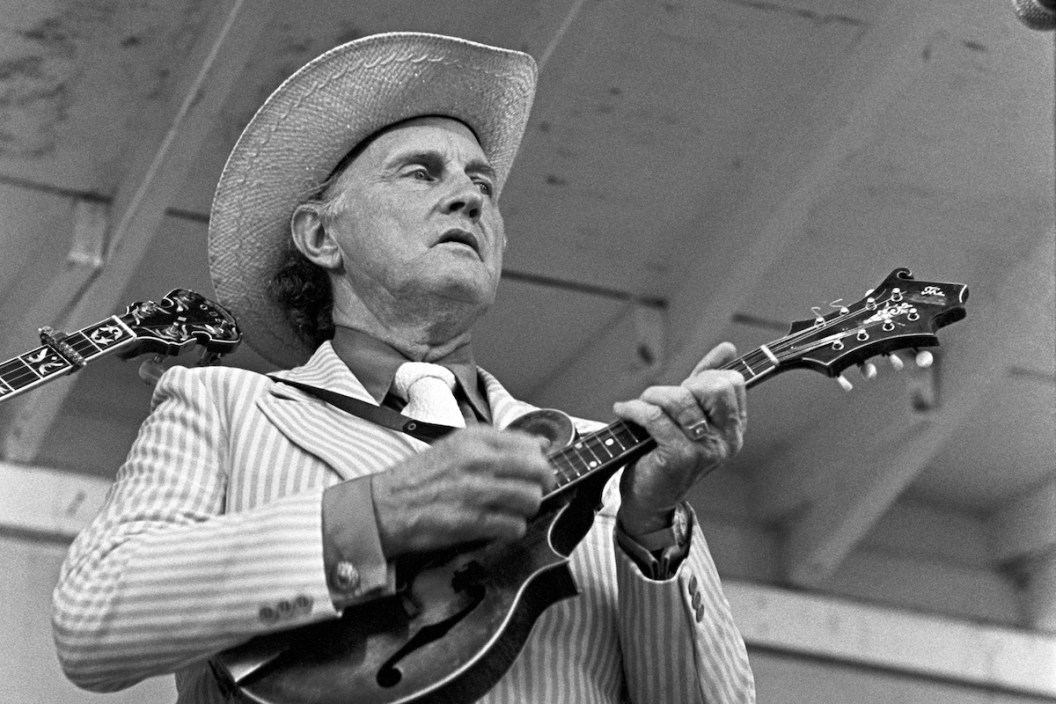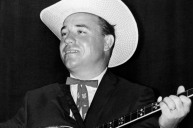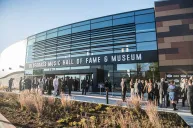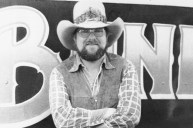By revitalizing preexisting folk sounds through a fresh and ever-evolving approach, Bill Monroe, his peers and their sonic children pioneered one of the most crucial and longest-lasting musical developments from the first half of the 20th century.
Videos by Wide Open Country
For snapshots of how bluegrass acts have always balanced tradition and innovation, consider these 12 impactful recordings that span over 50 years.
This isn't intended as a ranking of the best bluegrass songs. That'd require a much longer list of standards recorded by seminal artists. Instead, it's a look at the creation and progression of a genre that continues morphing to fit the times without losing sight of its roots.
"Love Somebody (Soldier's Joy)," Joe and Odell Thompson
Ongoing and vital conversations about the role of Black artists in the creation of country and other forms of American popular music extend to bluegrass, which still borrows liberally from musicians on the ground level of the recording industry.
"Blue Moon of Kentucky," Bill Monroe & His Blue Grass Boys
Bill Monroe and a backing band with a name referencing his home state of Kentucky first popularized a forward-thinking take on old-time, folk and string band music that, despite its traditionalist reputation, remains relevant and fresh over 75 years later.
To give you an idea of the impact Monroe made on popular culture, his composition "Blue Moon of Kentucky" became the first Elvis Presley B-side.
"Angel Band," The Stanley Brothers
Though Monroe certainly deserves credit for inventing bluegrass by 1945, he wasn't alone in forging a genre that'd stand the test of time. On the ground level you'll find Carter and Ralph Stanley: Virginia-born siblings who'd set the standard for bluegrass guitar and banjo (alongside former Monroe bandmates Lester Flatt and Earl Scruggs) and the blood harmonies at the heart of so much countrified music.
This selection points to the historic overlap between bluegrass and gospel. And many will recognize it from the soundtrack of the 2000 film O Brother, Where Art Thou?
"Foggy Mountain Breakdown," Flatt & Scruggs and the Foggy Mountain Boys
Early bluegrass innovators Flatt & Scruggs took Monroe's creation to Hollywood with two signature hits. First came "The Ballad of Jed Clampett," the theme for TV's The Beverly Hillbillies that in 1962 topped Billboard's Hot Country Songs chart. In 1967, Scruggs' famed five-string banjo performance on "Foggy Mountain Breakdown" (1950) gained a much stronger foothold in popular culture through its inclusion on the Bonnie and Clyde soundtrack.
"Mountain Dew," Grandpa Jones
Though a lot could be written about Grandpa Jones' skill as a musician, his greatest contribution came as an over-the-top personality on the Grand Ole Opry and Hee Haw: two platforms on which he represented the banjoist-as-humorist role that predated country or bluegrass music.
"Feudin' Banjos," Don Reno and Arthur "Guitar Boogie" Smith
Seventeen years before the film Deliverance made Eric Weissberg's "Dueling Banjos" a quintessential bluegrass song, Don Reno (of Reno and Smiley) recorded it under its original title, "Feudin' Banjos," with its composer, Arthur "Guitar Boogie" Smith.
"Tennessee," Jimmy Martin
Early in his career, Jimmy Martin set the standard for "high, lonesome" vocals as lead singer of the Blue Grass Boys. Martin later got crowned the King of Bluegrass as a crucial band leader and definitive guitarist who'd represent the genre well in the 1960s and beyond.
"Orange Blossom Special," The Stoneman Family
Early country music influencer Ernest "Pop" Stoneman contributed to bluegrass in the 1960s as the leader of one of its seminal family bands. His children rank high among the all-time greats for their instruments of choice-- namely fiddler Scotty, mandolin picker Donna and banjo player Roni. Indeed, the Stoneman kids' youthful exuberance made the group accessible to not just established bluegrass and country audiences but also the college student-driven folk revival.
"Won't You Come and Sing With Me," Hazel Dickens and Alice Gerrard
Though coed bluegrass bands date back to at least Sally Ann Forrester's time playing accordion for Monroe in the 1940s, women did not shift to the forefront (at least not on high-profile recordings) until the 1960s, when country innovator Rose Maddox and the socially-conscious duo of Hazel & Alice broke new ground.
"Rocky Top," The Osborne Brothers
Southeastern Conference (SEC) football immortalized this Felice and Boudleaux Bryant co-write first recorded in 1967 by siblings Bobby and Sonny Osborne. Since 1972, it's been synonymous with the University of Tennessee's athletic department and marching band.
"Sally Goodin," J.D. Crowe & the New South
A fresh crop of elite bluegrass players shared a platform beginning in 1971 when J.D. Crowe, a banjoist and former member of Martin's band, formed a group that at different times featured Tony Rice, Jerry Douglas, Doyle Lawson, Keith Whitley and Ricky Skaggs.
Bluegrass' progressive push into the future was also led by another group founded in '71: aptly-named New Grass Revival.
"Teardrops Will Kiss the Morning Dew," Alison Krauss & Union Station
Alison Krauss continually resets the bar for bluegrass excellence in an ongoing run of commercial and critical success she began in the 1980s as a teenager. She first joined Union Station in the studio for the 1989 album Two Highways.




